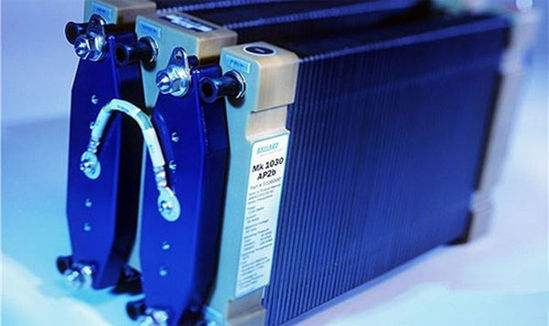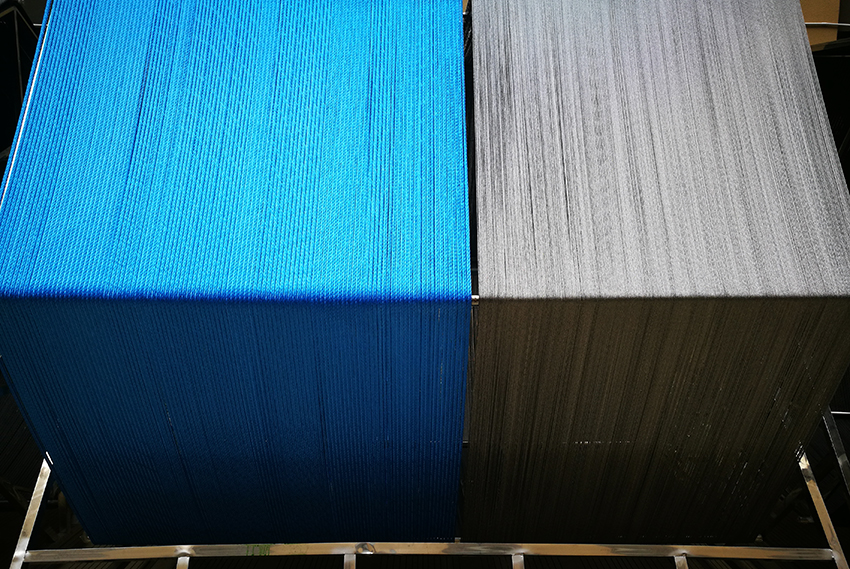The theme of “2017's 2nd International Conference on Power Battery Applications and the 3rd China Battery Industry Smart Manufacturing Seminar†in the fuel cell auto market sub-forum is “Status and Future: A Brief Discussion on Vehicle Fuel Cells†from the well-known field of fuel cells Relevant persons in charge of scientific research institutions, vehicle manufacturers, and parts and components manufacturing enterprises conducted in-depth discussions on topics such as fuel cell country policies, industry layout, key raw material core technologies, and sent out a more real voice in the fuel cell industry. Fuel Cell Technology Progress At present, China’s fuel cells are transitioning from “relying on the government and research institutions, a few companies participating, and not making profits as a whole†to “small-scale production, increasing number of layout companies, and turning to overall profitabilityâ€. Xing Danmin, deputy chief engineer and head of technology research department of Dalian Xinyuan Power Co., Ltd. believes that China's fuel cell industry has entered the early stage of the “development period†from the “import periodâ€. Xing Danmin introduced the latest developments in automotive fuel cell technology and industrialization. From the “Eleventh Five-Year Plan†to the “Thirteenth Five-Year Plan†period, Xinyuan Power developed three generations of systems for fuel cell systems, and the output power of the system was adjusted differently according to the requirements of users. Xing Danmin frankly stated that recently, fuel cells are "hot" in the industry, and the demand for electric reactors is getting higher and higher. The demand for high power is a trend. She feels pressure. Xing Danmin said that the development of the fuel cell market is faster than planned. It used to be led by the national policy and will inevitably be led by the market in the future. It will really turn to the market-oriented industrialization development. Tang Junke, vice president of Shandong Dongyue Group Research Institute, introduced some achievements that Dongyue Group has made in proton exchange membranes. In the field of fluorine materials, Dongyue Group is the world's largest refrigerant producer, while in the PTFE field, the Group's production capacity accounts for 1/4 of the world's total. Tang Junke introduced that the Dongyue Group DF260 membrane technology has matured, the product has been established, and mass production. The film has an output voltage of 635 millivolts at 90 degrees Celsius, 1.8 amps, and a durability of more than 6,000 hours to meet the needs of fuel cells. Dongyue Group has formulated the next batch of mass production plans, and it is estimated that around 2023, the production capacity can reach several million square meters. Professor Xu Sichuan of the New Energy Automotive Engineering Center of Tongji University stated that domestic fuel cell and fuel cell vehicles must be developed vigorously and must focus on the development of key components. For example, air compressors are currently lacking positive development in the country. Xu Sichuan R&D team developed corresponding impellers, scrolls, diffusers, motors and controllers according to the special needs of fuel cells. In addition, by controlling the temperature of the coolant, controlling the flow of air and controlling the pressure of the air, they can adjust the moisture content in the membrane based on the estimated water content in the membrane. Xu Sichuan believes that this is the ultimate solution in thermal management and is one of the effective measures to solve the problem of fuel cell life. How to solve the problem of fuel shortage, high potential and so on in the process of starting, idling, accelerating, and decelerating the fuel cell vehicle is a key issue in the integrated control of the fuel cell system. Only by solving these problems, the entire fuel cell system can be solved. The durability, economics, and dynamics will be greatly improved. Xu Sichuan believes that if a fuel cell vehicle is to reach 50,000 hours, it will be difficult to accomplish by merely conquering an isolated point. Guo Wei, Assistant Researcher of the State Key Laboratory of Advanced Technology for Materials Synthesis at Wuhan University of Technology, introduced the membrane electrode technology and industrial progress of automotive fuel cells in terms of performance, durability, cost, and industrialization of membrane electrodes. Membrane electrode products manufactured by Wuhan Polytechnic New Energy Corporation have exceeded 400 mA/cm2 in the case of 0.8 V, and the highest power density has reached 1.14 W/cm2, which has reached the US DOE index of fuel cells. Wuhan Polytechnic New Energy Co., Ltd. has established the first membrane electrode automated production line in China with a production capacity of 5,000 square meters per year. The company's fuel cell membrane electrode products are exported to the United States, Europe and other international markets. Han Wulin, deputy general manager and product director of Beijing Haidelisen Technology Co., Ltd., introduced the problems encountered in the selection of the key components of the Heidelberger hydrogen refueling station and shared the solutions of Hydrelsen. Han Wulin believes that in the design of hydrogen refueling stations, the matching, selection, and optimization of hydrogen boosters and storage tanks are the most important. He also analyzed the temperature problems of hydrogen storage vessels, stainless steel refueling stations, and hydrogen refueling stations. It is instructive to the industry. Business Layout: Card layout layout cultivating waiting for fuel cell flowering results Yutong buses are earlier in the field of fuel cells. Dr. Lifei Jiang, Deputy Director of the National Electric Vehicle Electronic Control and Safety Engineering Technology Research Center and Senior Engineer of Zhengzhou Yutong Bus Co., Ltd., introduced the development status and future plans of the Yutong Bus fuel cell. Yutong Bus developed the first-generation fuel cell buses as early as 2009; in 2012, it established a full-time fuel cell R&D team and independently developed the “electricity and electricity hybrid†power system; in 2014, it passed the first fuel cell passenger vehicle qualification certification in China; 2015 Obtained the first announcement of fuel cell bus in China; successfully developed the third-generation fuel cell bus in 2016; obtained the hydrogen system installation qualification in 2017. Li Feiqiang revealed that from 2018 to 2019, the number of fuel cell buses Yutong Bus plans to participate in the demonstration operation in Zhengzhou will reach 100. Shenzhen Xiongqi Power Technology Co., Ltd. is a well-known lead battery R&D and production enterprise. In September this year, Xiongxun announced the company's strategic plan for the development of lithium batteries and fuel cells in the next few years. The lithium battery and fuel cell industry wings in China At the time of gaining abundance, Xiong Yu shares sounded the clarion call at full speed. Zhang Huanong, founder and president of Xiongbu Co., Ltd., said that the company has completed the layout of the key links in the hydrogen industry chain including hydrogen production, membrane electrodes, fuel cell stacks, fuel cell engine systems, and vehicle operations. Beijing, Shanghai, Suzhou, and more than 10 cities in China, the goal is to build a nationwide hydrogen fuel cell industry closed-loop. Zhang Huanong believes that the blooming of the fuel cell industry will be beyond imagination. The road to fuel cells: China's "had a big morning, and ran a late set"? Domestic fuel cells have been developed under the guidance of national scientific research programs. During the "10th Five-Year Plan" period, basic scientific research work has started, with an early start, and a first-mover advantage; from 2006 to 2010, it is mainly driven by demonstration applications. The Olympic Games and the World Expo have a good demonstration. During the period of the “Twelfth Five-Year Plan†period, the entire hydrogen refueling station was built; during the “12th Five-Year Plan†period, SAIC, Yutong and other vehicle companies insisted on the development of fuel cells through the use of whole vehicles; then, what drives during the “Thirteenth Five-Year Plan†period? ? Ma Tiancai, an associate professor of the School of Automotive Engineering at Tongji University, believes that although the country's subsidy policy is good, the pulling of the fuel cell industry is not sustainable, and fuel cells still have to be market-oriented and product-oriented. The road map for developing fuel cell vehicles in China is relatively clear. Two key points: In 2020, the country plans to build 100 hydrogen refueling stations and 5,000 fuel cell vehicles; by 2025, there will be 100,000 fuel cell vehicles. All localities, provinces, and cities have also issued corresponding plans. They are optimistic about the number of vehicles and the number of hydrogen refueling stations. The state's subsidies for fuel cell vehicles are also relatively large. The demonstration of the third phase of the UNDP project began in five domestic cities, which provided a good opportunity for the “Thirteenth Five-Year Plan†and the subsequent industrialization of fuel cell vehicles. There is no doubt that there is a gap between domestic fuel cell technology and foreign advanced companies. Where is the difference? Ma Tiancai believes that from the perspective of vehicle and system integration, the gap is not large, mainly fuel cell systems, especially the electric reactor. Xing Danmin believes that there is a gap between the advanced level of China and foreign countries, whether it is the power density or the verification of the life span. The development of key materials such as upstream catalysts and membranes in the industrial chain is too weak. Ma Tiancai from the perspective of the entire fuel cell industry building, he believes that the domestic fuel cell industry chain has a relatively good foundation, but the majority of small and micro-enterprises, research institutes are mostly, the entire industry is not enough support. His concern is that in the future, hydrogen energy will become a bottleneck restricting the development of the fuel cell industry, and the landing planning of fuel cell vehicles will need to be advanced. Ma Tiancai's proposal for fuel cell companies is to develop key technologies and learn to use international resources. Whether China's fuel cell industry "has taken a big early date and rushed to a late set" depends on the development of the next few years.
SAFETY
One of the most important features of synthetic winch lines is the safety benefits they provide. Synthetic lines do not store energy while under load and are very lightweight. This means that if something should go wrong and the rope breaks, it will harmlessly fall to the ground. Steel wire rope on the other hand, stores a tremendous amount of energy under load, and in the case of breakage, will violently snap back and whiplash. This can cause serious injury to people involved in the winching procedure.
Synthetic winch lines don`t have any wire splinters or burrs like steel wire ropes commonly do, so there is no chance of getting a surprise hand injury while handling a synthetic line.
Kinetic Recovery Rope,4X4 Winch Cable,Jeep Recovery Rope,Dyneema Winch Rope Shanghai Uwin Automotive Product Co.,Ltd , https://www.uwinoffroad.com

STRENGTH
Synthetic winch lines have breaking strengths 30-90% higher than steel wire rope. This is a tremendous increase and allows for smaller diameter winch lines to be used when switching to synthetic, therefore increasing the amount of line that can be installed on the winch.
WEIGHT
Synthetic winch lines are up to 80% lighter than steel wire rope. Aside from the safety benefits mentioned above, this offers some obvious advantages. On a typical recreational off road vehicle, switching to a Synthetic Winch Line and an Aluminum Hawse Fairlead will shave up to 30 pounds of weight from the front of the vehicle. Rigging vehicle extractions is also much easier, especially in loose, hilly terrain. Synthetic winch lines are so light, they even float.